In my previous blog, I discussed the need to avoid creating silos in your curriculum, the importance of real-world learning and hands-on investigations, and the benefits of integrating STEM with other subjects. With the implementation of the CreositySpace unit, Mushroom Maestros, I highlighted many seamless ways to weave STEM into daily instruction, keeping the content exciting, visible, and accessible to all young scholars in an environment that is filled with creativity and collaboration.
In this blog, I will implement another CreositySpace unit called Contagion Crushers to focus on discovery learning, inspire big wonderings for all students, and plan for the unknown when engaging in student-directed, inquiry-based learning.
What is Contagion Crushers?
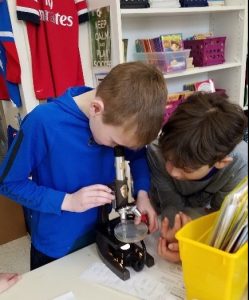 Each year our classrooms are filled with students of many different interests, experiences, and abilities including students with learning challenges, students who require enrichment and a means to stretch their thinking, ENL (English as a New Language) students, and students who may be disengaged or unavailable for learning for a variety of reasons at any given moment, and all these children must be reached.
Each year our classrooms are filled with students of many different interests, experiences, and abilities including students with learning challenges, students who require enrichment and a means to stretch their thinking, ENL (English as a New Language) students, and students who may be disengaged or unavailable for learning for a variety of reasons at any given moment, and all these children must be reached.
Meeting each individual learner where they are and taking them to the next level is real and daunting. However, CreositySpace’s Contagion Crushers hits the mark spot on, exciting students, study buddies (parents), and teachers to do their best collaborative thinking, teaching, and learning, giving everyone a seat at the table with STEM.
Contagion Crushers is focused around a real-world example of innovator Colleen Costello and her company, Vital Vio. Students explore her story behind inventing an overhead and disinfecting light source.
Throughout the unit and the year, my team of young investigators constantly refer to the enduring understandings and an overarching essential question provided: Given Earth’s limited resources, how can we use technology to accomplish more with a single device or product?
Using the Educator Guide
With a multitude of resources in the CreositySpace Contagion Crushers Educator Guide, I can select materials that address the interests and learning levels of my students. The cross-platform guide features print and digital text, entrepreneur videos, and how-to videos. These lend support to the engaging hands-on investigations that connect the curriculum to real-world applications.
One resource leads me to several new ones that I can plug into my instruction and the students’ discovery learning plan or Google Classroom. The print version is contained in a binder that allows me to take notes, modify assignments to fit the needs of students, and add my ideas and samples of student work. Additionally, the digital version of the guide is a living document that is frequently updated and easily accessible for teachers.
Curriculum Accessible for All Students
In order to reach all students, teachers can tap into the curriculum and the abundant resources to prepare for the exciting, unplanned learning that takes place with STEM! With up to 7 ENL students in my class, they may begin with little to no receptive or expressive English language skills. However, with the levels of engaging texts and materials, the various means of presentation (video, digital, and print text) and hands-on investigation, these same students become teammates who can discuss, explain, defend, and modify their thinking and write about their understanding of accelerated content like Contagion Crushers.
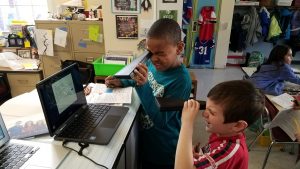
Through investigations, students use real-world scientific tools including spectrometers, petri dishes, and polarizing films to do their work. Students who struggle in other subjects suddenly find themselves as the “engineering and design expert”, the “spokesperson”, or the “clever expert” with multiple ideas and solutions. They may also find themselves as artists who can replicate their ideas and understandings through drawing, 3D sculpting or diagrams, or as math experts who know how to create colorful, informative graphs using technology such as Excel spreadsheets.
The Inquiry Process
The Contagion Crushers unit is centered around three hands-on investigations. In the first, students explore the direction of light using polarizing films and various light sources. Then they investigate light using prisms and spectrometers and learn how to record the spectrum through different media. Last, they collaborate in small teams of three students to grow bacteria in a petri dish using a quadrant in the petri dish as a control. Ongoing observations and comparisons are made by the team prompting more investigations and research until they arrive at conclusions. The inquiries are directed by the students as they share results with their peers and teacher. Guidance and support are available when needed.
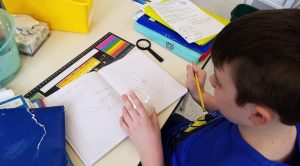
The hands-on approach and student-directed inquiry opens the floor for discussions and thoughtful research that proves or disproves a theory. All students can participate, see the value in their ideas, and share their thinking with eagerness and confidence.
They record their investigative process in the “My STEM Explorer Notes” and refer to the “My STEM Stories Notebook” to learn relevant vocabulary and to learn about the entrepreneurs. Additionally, we were able to schedule a Skype session with Colleen Costello. The students had prepared statements and questions for her in advance. Colleen spent 40 minutes chatting with the team, answering questions, pondering students’ wonderings, and asking questions of them. The students were inspired to research further and to create.
Inspiring Future Learning
The excitement in our classroom was palpable! The students came to me with a proposal to select an innovation from their Book of Ideas (BOI) and have a “shark tank” pitch. In June, after using three of the CreositySpace units alongside all other content areas, the team of young innovators thought up and planned for our first ever, Young Scholars’ and Entrepreneurs’ Expo.
With the help of CreositySpace, we designed a Google slide deck template from which the students built their presentations. Amazing heart-felt letters were written by the team to parents, district administrators, content supervisors, the Board of Education, and their favorite STEM partner, Mr. Jimmy, our building’s custodian. The result was an afternoon of 22 young scholars surrounded by adults and students alike. They presented their pitch in a shark-tank like manner, discussing the inspiration behind their ideas and their next steps. They answered questions and received endless commendations for their work and creativity.

The benefits of using CreositySpace units are endless because Contagion Crushers makes for an exciting, invigorating, and seamless interdisciplinary approach to teaching and learning. It combines deep discussions, team collaboration, and hands-on investigations that are student led and inquiry-based. I have watched our team grow and develop relationships that are cooperative and trusting. They work tirelessly in school and at home to bring what they have learned to life.
Learn more about Contagion Crusher here:

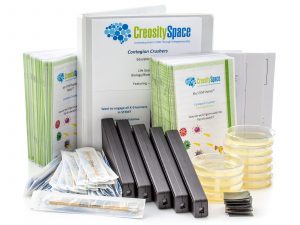
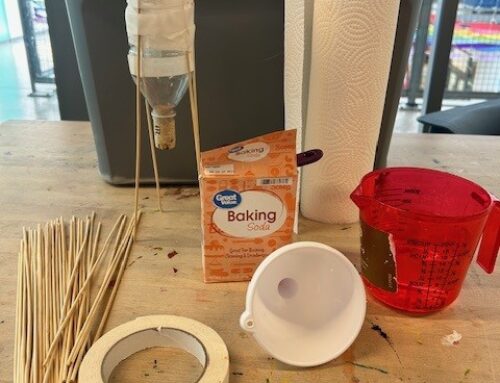

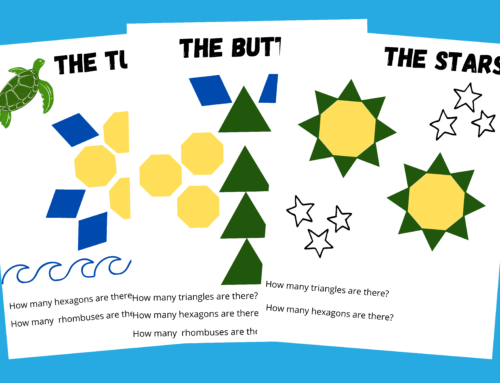

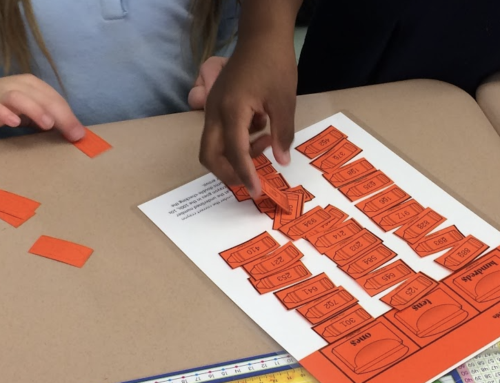

Leave A Comment